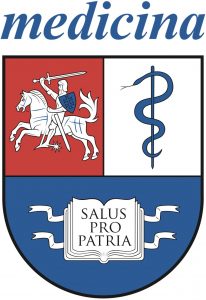Publications

Dose Escalation Can Enhance the Therapeutic Potential of Radial Extracorporeal Shock-Wave Therapy in the Treatment of Plantar Fasciitis in Runners
Authors: Sebastian Szajkowski 1, Jaroslaw Pasek 2, Grzegorz Cieslar 3
Affiliations:
- Faculty of Medical and Social Sciences, Warsaw Medical Academy of Applied Sciences, 8 Rydygiera St., 01-793 Warszawa, Poland
- Collegium Medicum im dr Wladyslawa Bieganskiego, Jan Dlugosz University in Czestochowa, 13/15 Armii Krajowej St., 42-200 Czestochowa, Poland
- Department of Internal Medicine, Angiology and Physical Medicine, Faculty of Medical Sciences in Zabrze, Medical University of Silesia in Katowice, 15 Stefana Batorego St., 41-902 Bytom, Poland
Journal: Medicina - May 2024, Volume 60, Issue 5, Article no. 766 (DOI: 10.3390/medicina60050766)
-
Field & Applications:
- Sport
- Medical
- Treatment evaluation
- Musculoskeletal disorder
- Fatigue / Overtraining
- Recovery from injury
Background and Objectives: Treatment of chronic plantar fasciitis is challenging given that there are various of available treatment options with no clear gold standard. The aim of the study was to examine the dose-escalation effect of rESWT on the biomechanical parameters of the plantar fascia and pain ailments.
Materials and Methods: In the experimental group (n = 30), the intensity of the shock wave was increased every two subsequent treatment sessions. In the control group (n = 32), the treatment parameters were not changed. In both groups, six treatments were performed, with two treatment sessions a week. In order to assess the biomechanical parameters of the plantar fascia, myotonometric measurements were performed. The pain intensity was assessed using the Visual Analog Scale (VAS).
Results: The tension of the plantar fascia attachment in the experimental group decreased from 27.69 ± 2.06 [Hz] before treatment to 26.29 ± 1.69 [Hz] after treatment (p = 0.009) and to 26.03 ± 2.15 [Hz] 1 month after the beginning of treatment (p = 0.003). In the control group, the frequency results did not change significantly (p > 0.05). Flexibility increased in both groups. The test results before treatment and 1 month after the beginning of the treatment showed statistical significance in the experimental group (p = 0.001) vs. (p = 0.002) in the control group. The differences were not statistically significant between groups (p > 0.05). The assessment of pain intensity carried out 1 month after the end of treatment in the experimental group amounted to 3.14 ± 2.28 points, which was statistically significantly lower compared to that in the control group, where it amounted to 5.14 ± 1.92 points. (p < 0.001).
Conclusions: The use of rESWT performed with an increasing intensity of impact during subsequent treatment procedures demonstrated greater effectiveness in improving the biomechanical parameters of the plantar fascia and was also more effective in reducing the pain ailments. Our results are encouraging. The dose escalation in the treatment cycle is worth considering. To prove that this method of treatment is more effective, a randomized controlled trial should be carried out on a representative sample.
Keywords: shock-wave therapy, calcaneal spur, myofascial stiffness, musculoskeletal system, treatment
The proposed method of treatment, with a gradual increase in the dosage of rESWT, shows greater effectiveness in improving the biomechanical parameters of plantar fascia in a long-term assessment compared to the treatments performed with the application of constant values for the treatment parameters without causing side effects. The proposed method was also more effective for the reduction of the pain experienced.
In our opinion, the presented method of treatment can be used in clinical practice as a safe and effective method of treating patients with plantar fasciitis. Our results are encouraging. The dose escalation in a treatment cycle is worth considering. To prove that this method of treatment is more effective, a randomized controlled trial should be carried out on a representative sample.


